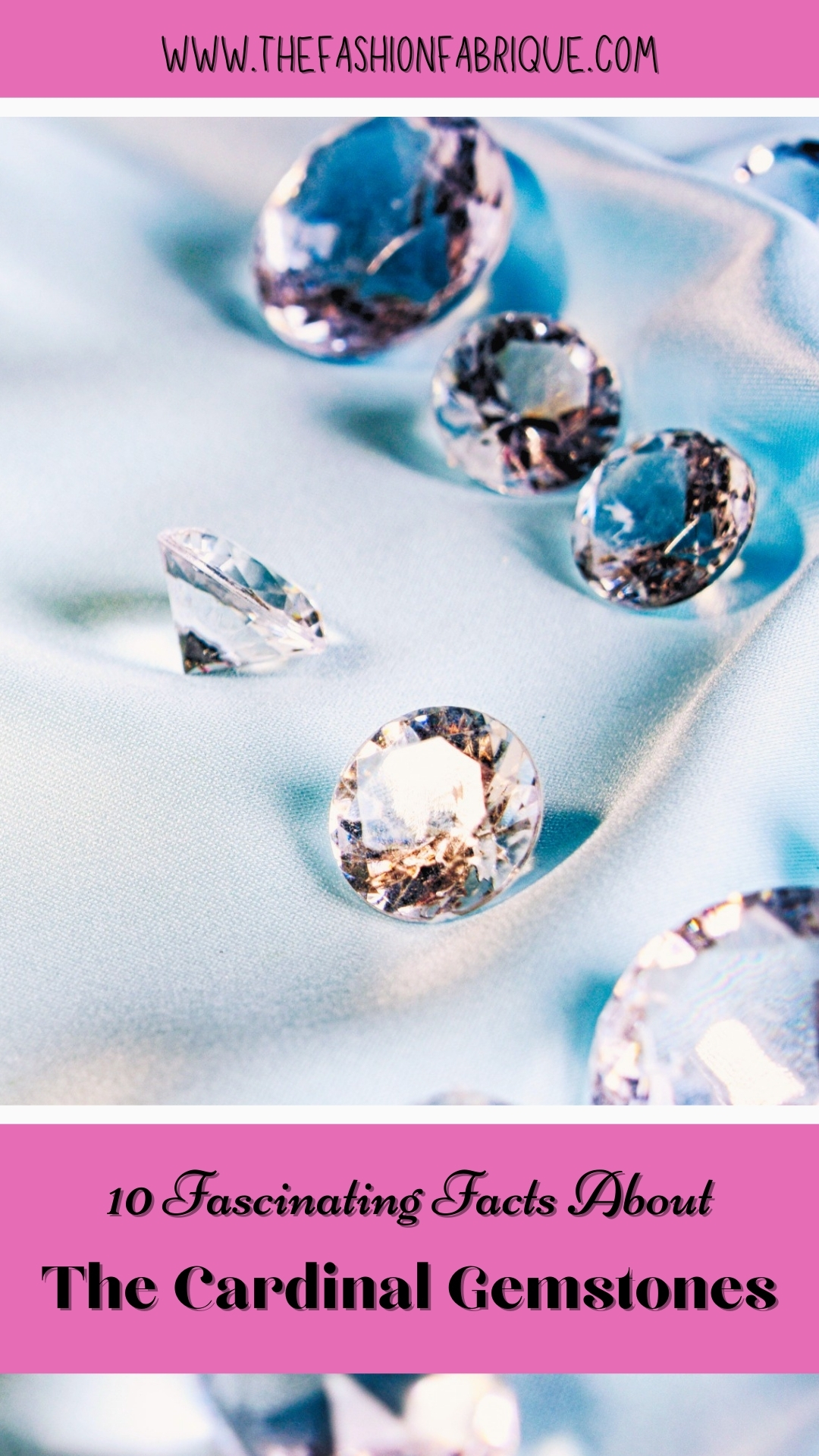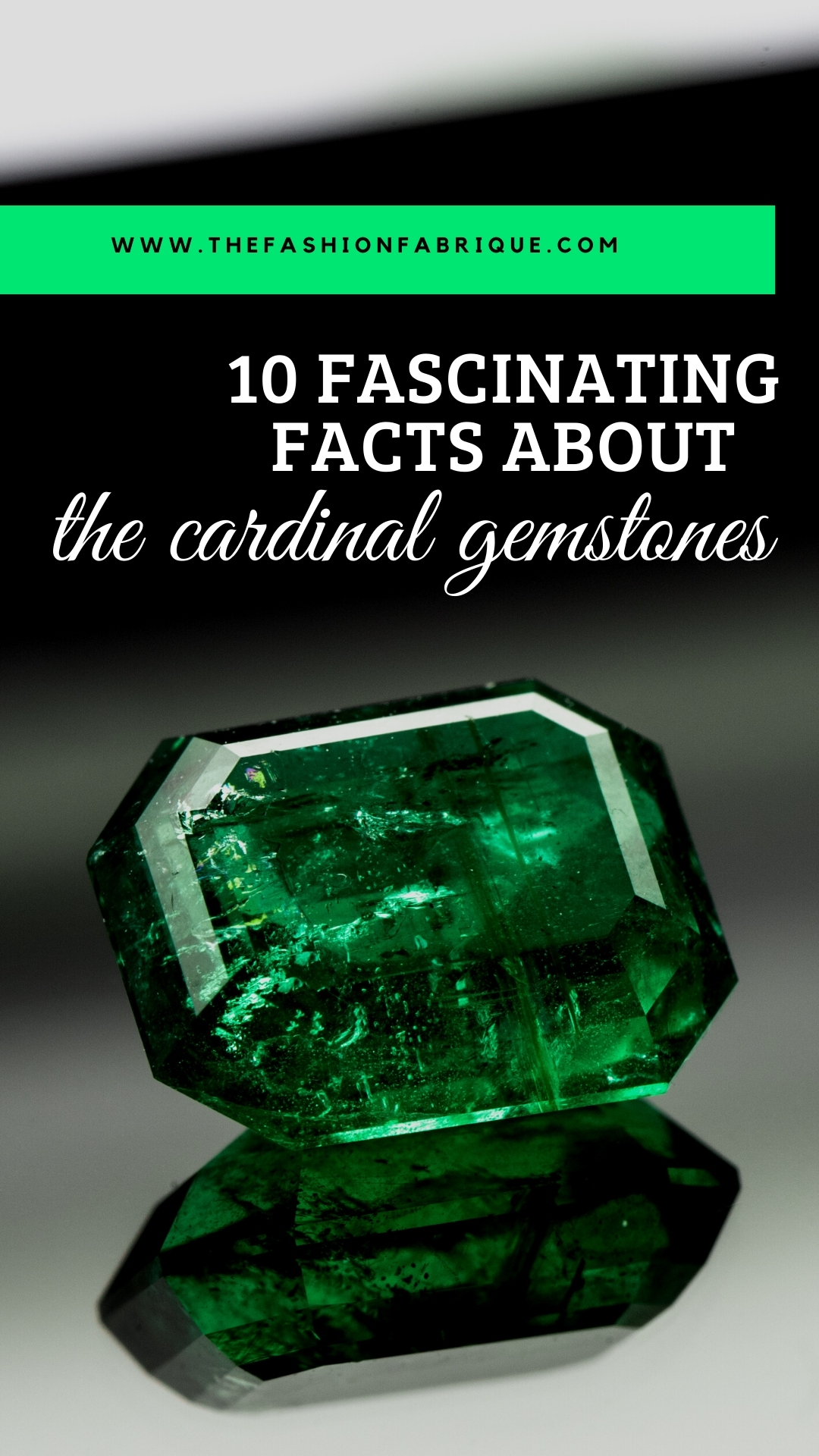10 Fascinating Facts about the 5 Cardinal Gemstones
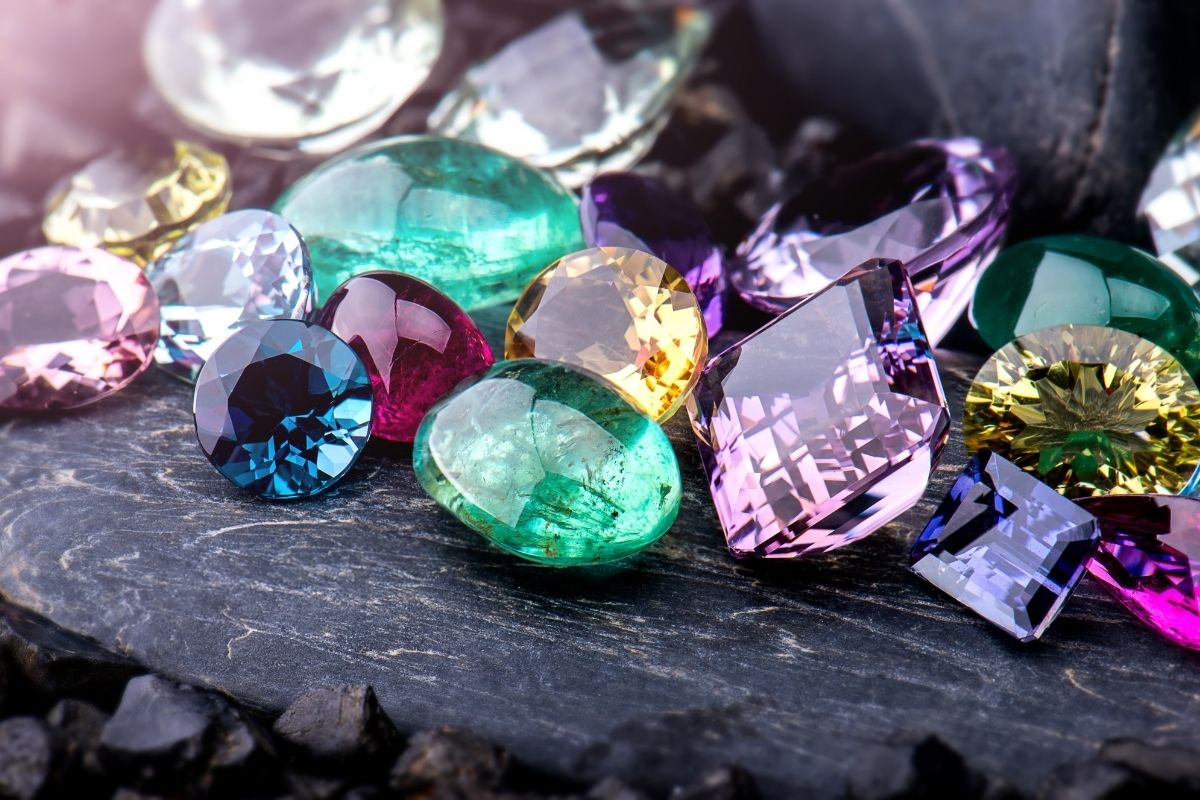
I was thinking that a good ol’ explanatory gemstone facts article could be enlightening for all of us. Ever since I was a child – as in, younger than 10 years old – I have been obsessed with gemstones. My father himself used to collected stones of all colors. When he used to hand down to me a beautiful black gem stone – or a white gem stone, whatever he had in his collection – I would be head over heels.
Fifteen years later, I am still obsessed with those little precious rocks. Everything about green, yellow, pink, or orange gem stones gets me going. It’s more than just beauty. I am always happy to learn exciting amethyst, emerald, or amber gemstone facts.
It’s not that hard to fall in love with the jewelry world. Rather, the contrary seems unbelievable to me. It’s not about how useful this artistic field is. It’s about self-expression, aesthetics, and history. There’s a curiosity about those tiny pieces of precious Earth.
Today, I might not be talking about alexandrite gemstone facts, but I will talk extensively about the 5 cardinal gemstones. They’re the most coveted gemstones in the world and have been for centuries. I might add a little note here and there about other stones, like the opalite stone spiritual meaning or some birthstones. Read on to find out all the exciting facts about the cardinal gemstones!
10 Fascinating Facts about Cardinal Gemstones
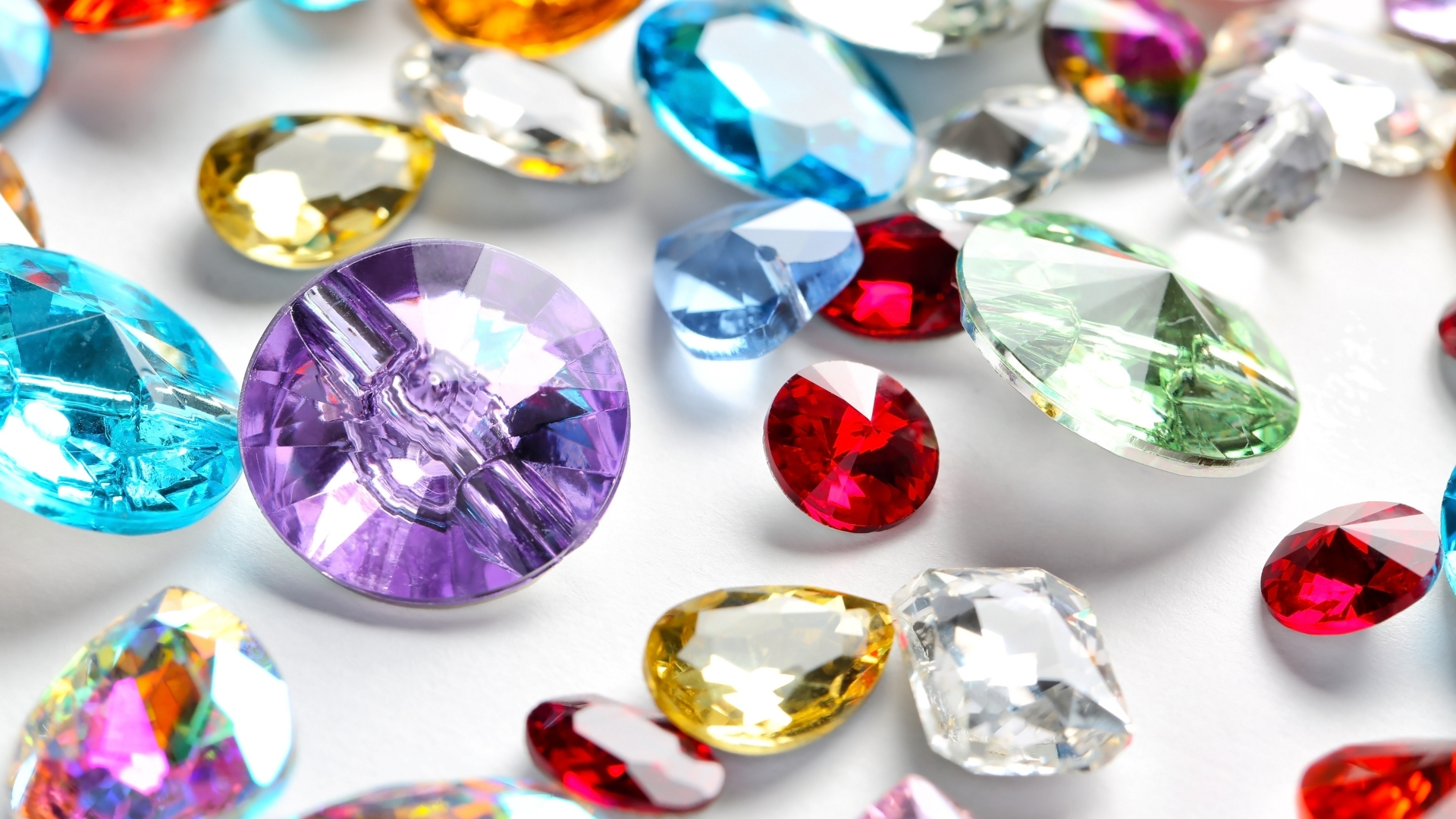
Here we go. We’re about to dive (very) deep into the 5 Cardinal Gemstones world. What an exciting adventure, where you will learn about the beauty and beliefs surrounding the pricey rocks.
Get ready to unveil the most fascinating gemstone facts, from the sources to the birthstones, with some more documentation available for you at the end of the article. Let us know your favorite gemstones – I’d personally love to read all about them!
1. What Are The 5 Cardinal Gemstones?
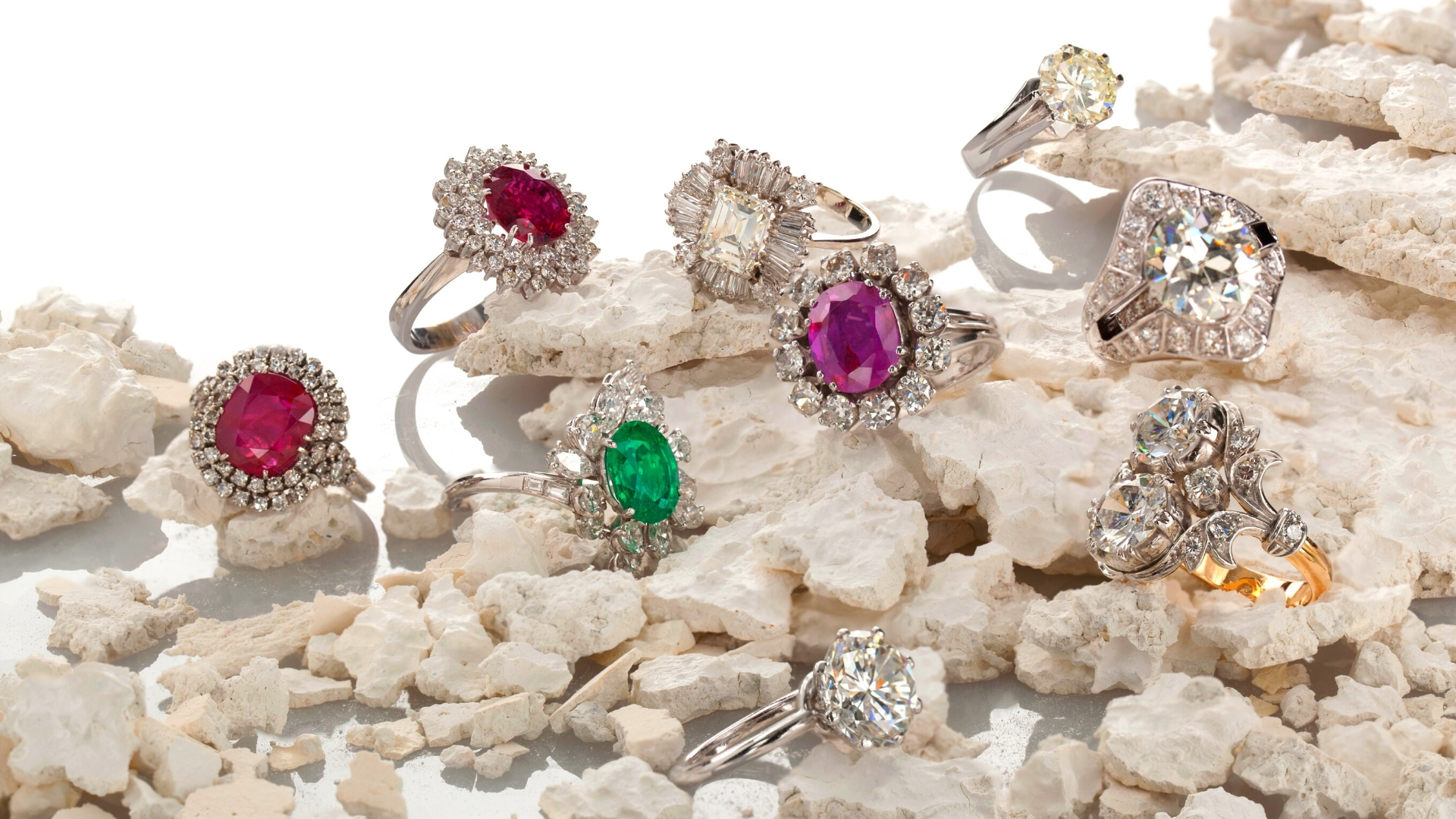
Before we get deeper into this mini-guide about the 5 Cardinal Gemstones, it would be smart to break them down. Wouldn’t it? Cardinal Gemstones have been around since Antiquity – as in, around the time of the Roman Empire. However, many sources that date back from earlier in History already cite some or all of these gemstones.
The 5 Cardinal Gemstones are traditional:
- Diamonds
- Emeralds
- Rubies
- Sapphires
- Amethysts
At this stage in history, many consider Cardinal Gemstones to encompass all but the purple amethyst. It used to be one of the priciest precious stones. That is until large deposits popped up in several parts of the world, for instance in Brazil.
Diamond
When we talk about gemstones, the most famous precious stone people remember is the diamond. There are historical and archaeological records of diamonds as ornaments for jewelry as far back as 1200 BC. It’s easy to fall in love with the white gem stone. It is one of the most sought-after gemstones because of its rarity and quality as one of the hardest materials on Earth.
That’s not all – full transparency is what gets the prices of diamonds rising up, up, and up. People prize a colorless diamond because of the ‘fire’ it gives. The ‘fire’ is a term that describes the ability of a diamond gem stone to disperse light. The less color it has, the more colorful the dispersion of light will be. Picture a prism, with the multicolor rendering of light.
Diamonds rose to fame thanks to the company De Beers. By the end of the 19th Century, this company, built by one single businessman, was controlling 90% of the whole diamond market. When De Beers launched their famous marketing campaign ‘A diamond is forever’, the world went crazy. Fun gemstone facts: if people still offer diamonds mounted on engagement rings today, it is all due to De Beers.
This just wasn’t as much of a ‘thing’ before, even if diamond gemstones have been cherished for centuries. Actually, from the Renaissance onwards, rubies, sapphires, amethysts, and emeralds all boasted higher prices than diamonds. Today, diamonds are again one of the most coveted rare precious gemstones. However, it is not only their rarity that makes them attractive. Otherwise, people would be talking about the precious – and super rare – alexandrite gem stone way more often.
Emerald
The emerald is a variety of a mineral called beryl. Gemstones get their final color when trace elements mix into the layers of stone forming. In the case of the emerald, chromium and vanadium give emeralds their distinctive green color. Beryls are more fragile than diamonds, sapphires, and rubies. For this reason, jewelers have developed the large, squared ’emerald cut’ which protects the emerald better than other cuts.
This brittle, fragile nature of the emerald gemstone leads to a high presence of inclusions within. This means that whichever the price you are putting in, an emerald with inclusions is something to expect and a sign of an authentic emerald.
► Read: Our 10 Favorite Colorful Jewelry Brands
Sapphire
Sapphires are a variety of a mineral called corundum. The name literally means ‘blue’, however, one can find sapphires of quite any color today. The blue color is due to the aluminum oxide composing the sapphire blended with trace elements like vanadium, chromium, and iron. Depending on the number of trace elements, a sapphire can be orange, yellow, purple, pink, green, or even white. A red-colored sapphire does not exist, as it will carry another name: ruby.
Ruby
Rubies are another variety of the mineral corundum. They stem from the same element as sapphires, and their color is due to the trace element, chromium. The brighter and more saturated a ruby is, the more valuable it gets. Rubies do exist in various shades of saturated or unsaturated colors – the bright ‘pigeon red’ colored ruby is the most valuable. Of course, the final value also depends on the clarity of the stone, in which the cut plays a great part.
Amethyst
The amethyst is a quartz variety which color varies on the purple color scale. At this stage in history, many consider the 5 Cardinal Gemstones to encompass all but the purple amethyst. It used to be one of the priciest precious stones. That is until large deposits were found in several parts of the world, including Brazil. Even if some do not consider the amethyst as part of the cardinal gems, its beauty is still unmatched.
All the different types of gem stones have a common point: they all stem from the Earth’s guts. It is only due to extreme pressure and heat that geodes compress into colorful minerals known as gemstones.
Gem stone facts: the amethyst, as such, comes from the quartz mineral. Compressed and submitted to heat and pressure, it becomes purple as impurities and trace elements like iron blend into the gemstone’s formation. While purple is amethyst’s main color, secondary hues may appear while you’re turning the gemstone around. Blue and red are the natural hues you will encounter more often.
3. How do you grade the quality of a gemstone?
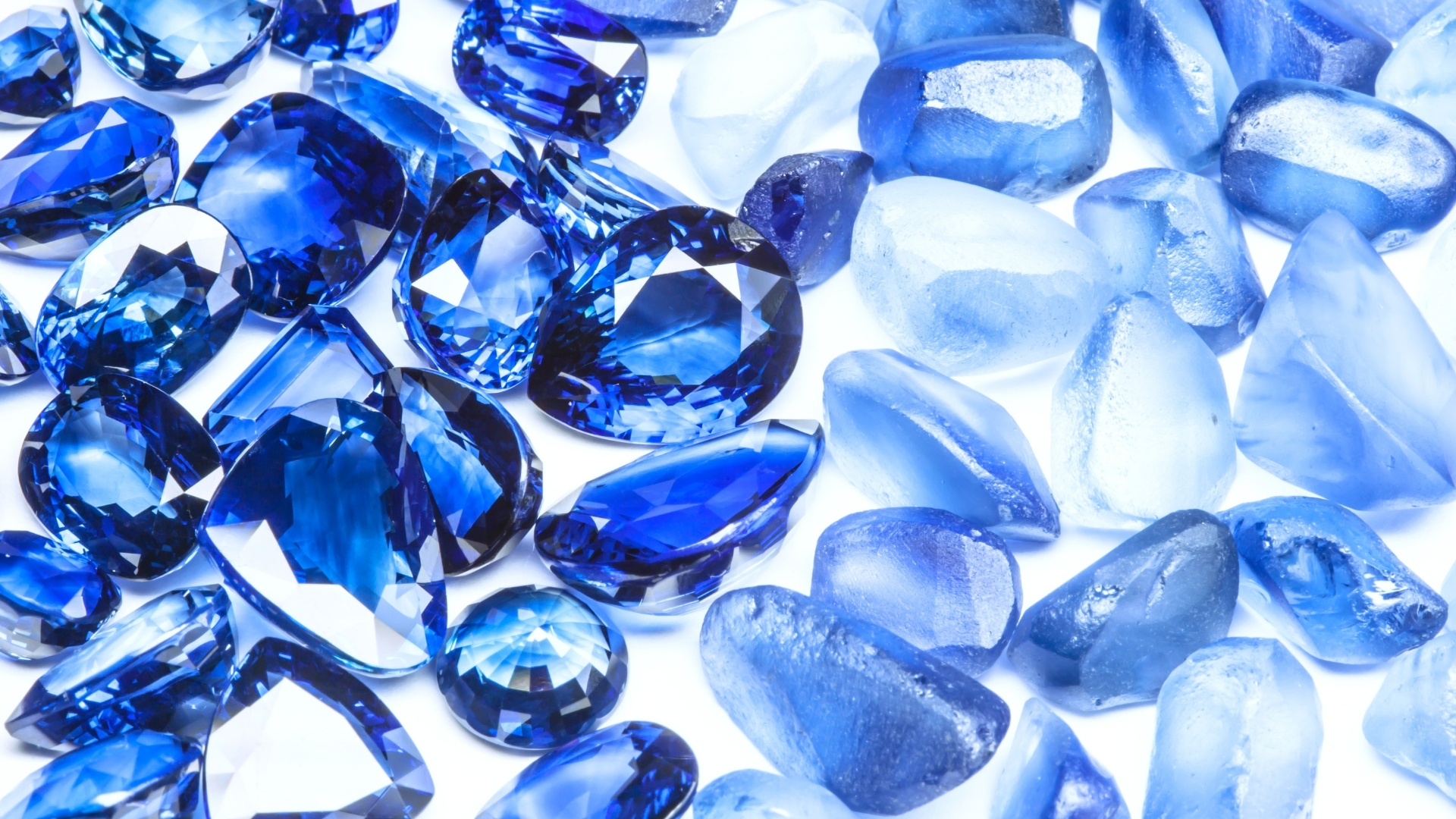
Grading a gemstone in terms of quality lies on four elements:
- The Color
- The Clarity
- The Carat Weight
- The Cut
Color
A gemstone’s color is graded according to three properties: the hue, the tone, and the saturation. A hue is the color we see straight away – a purple amethyst, a white diamond, a green emerald, and so on. The tone refers to how light or dark a stone is, and the saturation refers to the intensity of the color – a pinker amethyst, or a brighter purple hue.
The more saturated and vivid a gemstone, the more valuable it gets. The color grading answers to standards set by gemologist associations around the world, notably the GIA.
Color grading for a diamond is set on a separate scale graded via letters. A perfectly colorless diamond is graded D, and its color is invisible to the naked eye down to the letter F – transparency is what differs between those letters. G to J are diamonds which color is visible if the gemstone is not set. From H to Z, the color is more and more visible and yellow.
Clarity
Clarity refers to how clean and transparent a gemstone is. Since the passage and rendering of the light is a crucial factor in a gemstone’s beauty and value, clarity is essential. However, gemstones are more often than not naturally included with fractures, dust, or pieces of minerals, which leads to a compromise on clarity. The jeweler’s work is to work around the inclusions to keep the cut stone as big as possible while minimizing the inclusions’ appearance.
Cut
The cut is one of the defining factors of the final price. Some cuts, like the round brilliant cut (the basic, round gemstone) produce more wastage. Hence, a higher price. The symmetry and polishing techniques are factors of a jeweler’s skills and impact the final price as well. Finally, some cuts are preferable for various reasons that you will have to find out. If you want your fingers to appear longer, an oval cut stone is perfect. If you want the stone to look more imposing, an emerald cut is your go-to.
Carat weight
Carat is a weight measure, although it is not common knowledge. 200 milligrams make a carat, and 5.000 carats make a kilo. Since larger stones are much harder to find than small ones, the price more than doubles for stones of the same weight. For instance, two 1-carat gemstones will cost less than a 2-carat gemstone because smaller stones are easier to find.
4. What are the sources for the 5 Cardinal Gemstones today?
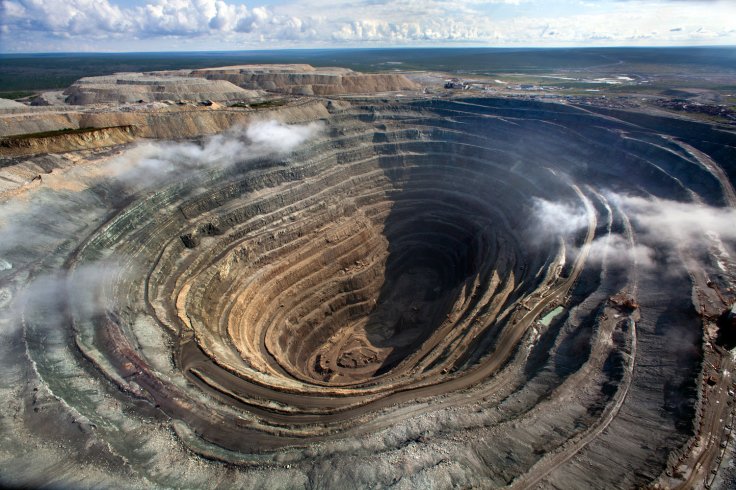
Depending on the cardinal gems, the sources vary greatly when it comes to finding new precious stones. Here, I won’t be talking about amber gemstone facts – rather, I want to show you that all cardinal gemstones have their specific areas where they’re mined.
For instance, sources for amethyst are Siberia, Sri Lanka, Uruguay, and Brazil for the most part. The Siberian amethyst is the most famous in the world, bright and clear, and its price can shoot up quickly.
In the Old Cardinal Gem Mine in North Carolina, cardinal gems like sapphires and rubies have been sourced for over four decades. Gemstone facts: amethysts, garnets, and the magical moonstone are also present there. Rubies, however, are historically a product of Burma (today’s Myanmar), Columbia, Brazil, and Afghanistan among other important sources.
Sapphires, which are the same element as rubies in a blue color scheme, find their source in roughly the same areas, like Kashmir, Myanmar, Sri Lanka, Madagascar, and Australia.
The most important sources of emerald today are in Columbia and Zambia – which shows that South America is indeed a great producer of all five cardinal gemstones.
Diamonds are present on almost all the continents of the world. South Africa, Brazil, Russia, Canada and Australia are the biggest sources of diamonds. Because we often have no idea what a gemstone mine can look like, I have included above a picture of what a Russian diamond mine looks like in 2021.
5. The 5 Cardinal Gemstones: Spiritual & Health Properties
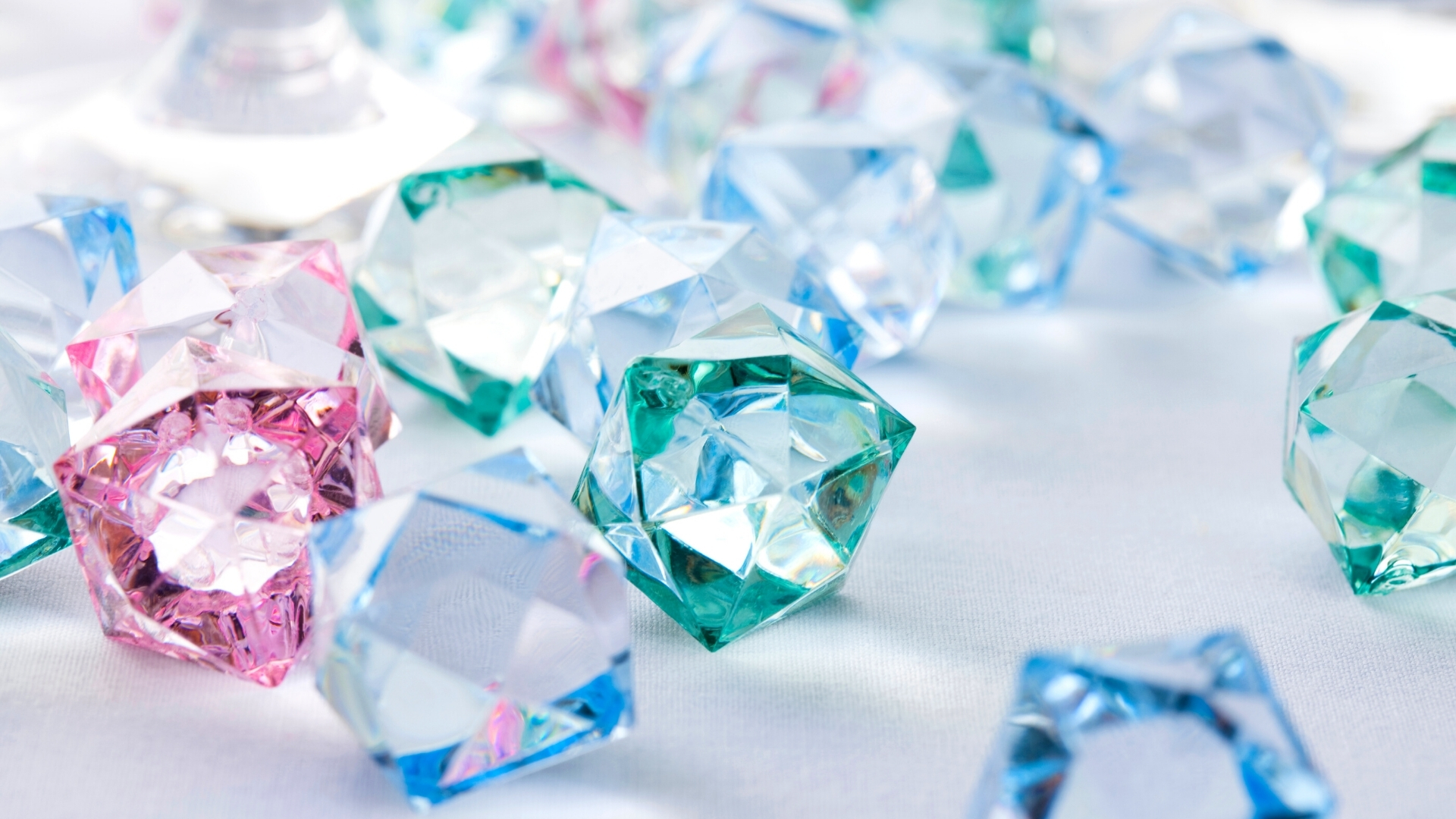
Among interesting gem stone facts, it is pretty cool to know that cardinal gems have been lent tremendous health benefits and spiritual meanings. This did not start yesterday with a social media trend. For hundreds of centuries, people around the world have considered life stones gems & minerals to be able to cure and heal.
I will not talk about amber gemstone facts or about the opalite stone spiritual meaning. Obviously, I would love to but this article would take hours for you to read and boring you is not my point.
Spiritual healing with crystals: is it a real thing?
There is no scientific proof that wearing or owning a cardinal gemstone might heal you – physically or mentally. However, countless studies have been conducted and suggest that believers of crystal healing might be benefitting from the Placebo effect.
However, crystal-based therapies and alternative ways of healing the body and the mind have been popping up these last few years. Whether you go see a healer who places stones and crystals on your chakra points or simply own the crystals at home, one can only wonder if it really works. I guess the only way to know is to try.
Spiritual and Health Meanings of the 5 Cardinal Gemstones
At the time of the Greek empire, amethyst was believed to keep people from being too intoxicated with alcohol. Today, it is mostly believed to be a crystal that reduces stress and brings in calm and soothing feelings.
Emerald is considered to have healing properties when it comes to the organs and relaxing properties when it comes to the mind. As such, if you are suffering from muscular, lungs, heart, or spine afflictions, emerald’s curing properties are aimed right at you. In the same vein, balance and recovery are other emerald properties.
Rubies symbolize energy and empowerment. It is used to enhance metabolism and improve heart and lung vitality.
Sapphires, with their soothing blue color, promote sound sleep and calmness. Since color therapy is also an important element of crystal healing, the blue color is believed to help focus and mental acuity.
Diamonds, finally, are believed to lead to certain victory. It is also given the images of eternal love and devotion. The first-ever engagement ring set with a diamond dates back to 1477 and was offered to Mary of Burgundy.
6. What is the Cardinal Gemstones market like today?
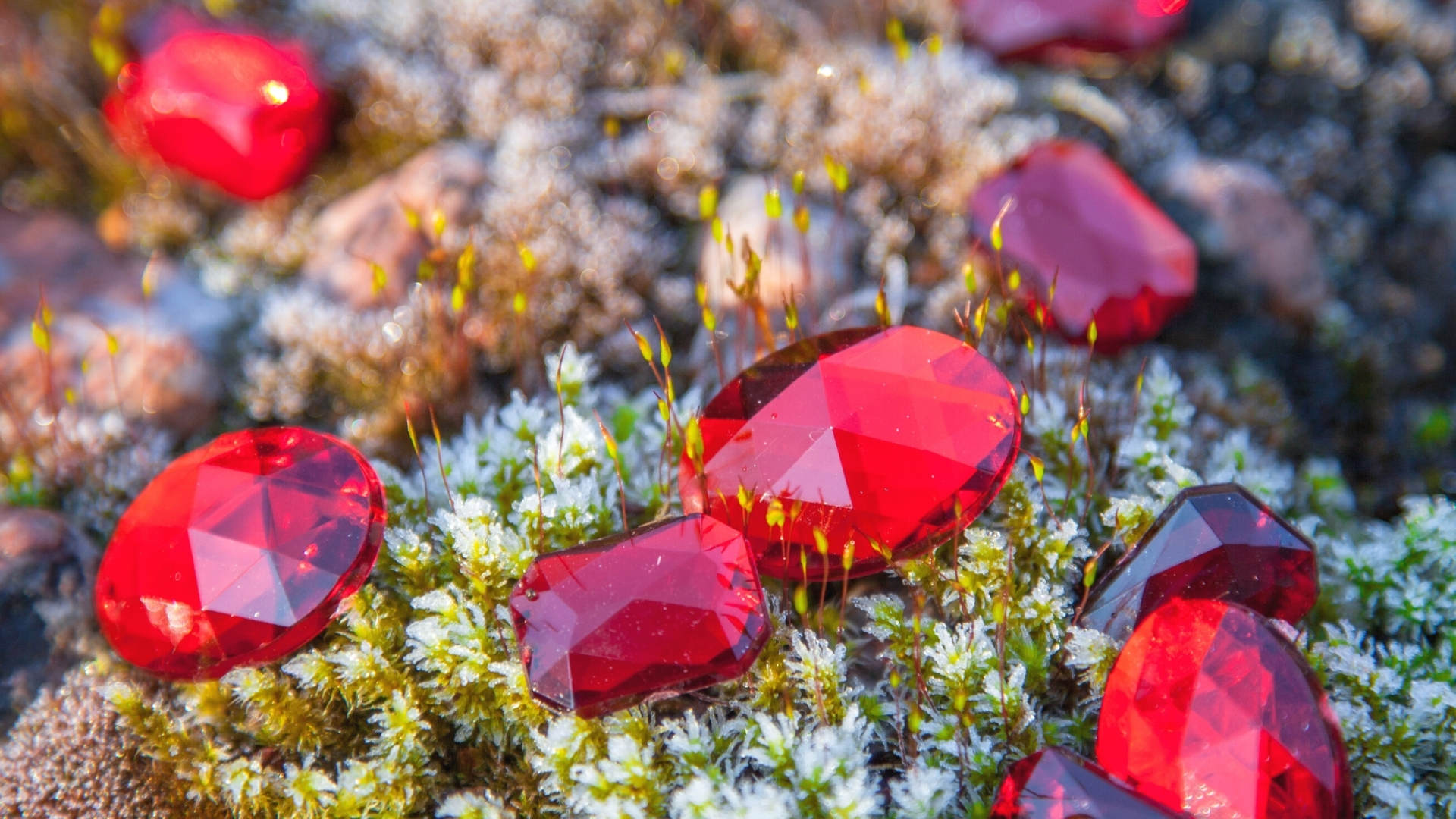
Today, most cardinal gemstones still enjoy the same envy and love as ever. The world seems to be way more expansive than it used to be when royalty was still a round-the-world thing. As such, reports only can show us how much people buy of which stone.
Diamonds are still a huge part of the whole gemstone sales, and still the first choice for engagement rings. However, other than for very big occasions, costume and fashion jewelry have popped up big time. As a result, with the decrease in purchasing power and the multiplication of jewelry brands, people are less inclined to buy expensive jewelry. Proposals, weddings, and anniversaries are it-moments to offer a high-end piece of jewelry.
► Read: Our 10 Favorite Chic and Elegant Jewelry Brands
Gem stone facts: People are beginning to purchase fewer diamonds and more nondiamond gemstones. For instance, in 2019, the gem-quality diamonds imports suffered an 8% decrease compared to 2018 only. One could put that on account of the price. I personally think that there are so many options available in terms of brands and gemstones that people want variety. The world is fast-paced, and we now like to change and vary rather than hold on to just one precious object.
7. Cardinal Gemstones & History: The 3 Most Famous Gemstones
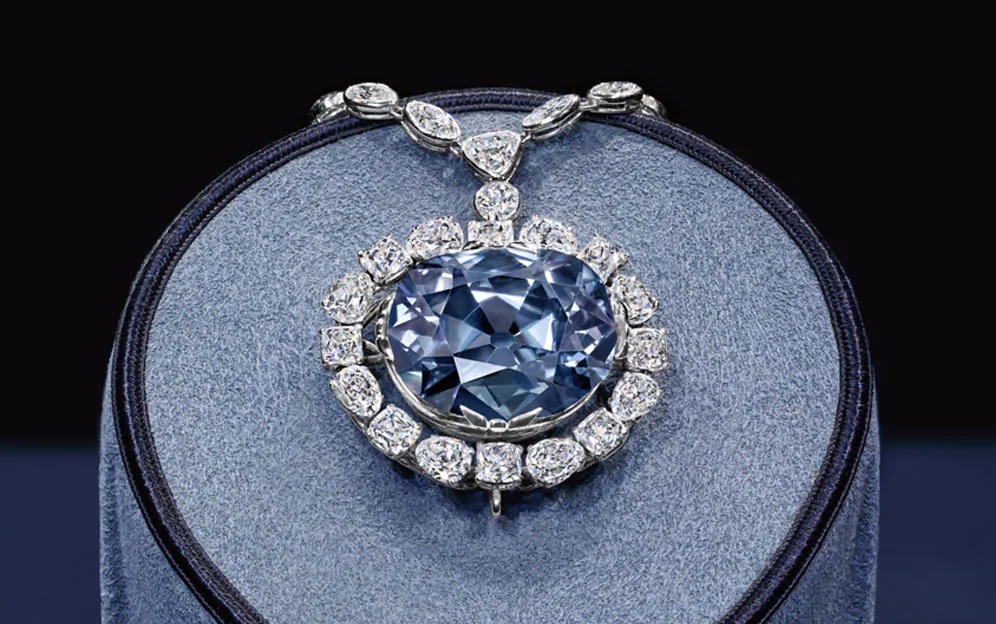
There are many more famous cardinal gemstones than we can ever count. Traditionally, the types of gem stones rendered famous by history are the five mentioned in this article. However, their color can vary from the usual one. A pink gem stone, or blue, or yellow gem stones have been known to be extremely famous over the years.
Hope Diamond
The Hope Diamond is the most famous gemstone in History – or at least, one of them. It is a stunning blue diamond named after the famous banker Thomas Hope, but it dates back centuries. It used to be a diamond mined in India, then cut up into various pieces and sold to French King Louis XIV.
Gem stone facts: The Hope Diamond is still one pretty big piece of cardinal gemstone. As I mentioned, a heavy one-piece gemstone is much rarer than many small stones. As such, its 45.5-carat weight is well balanced with the $250 million it is worth in insurance.
Koh-i-Noor Diamond
The Koh-i-Noor diamond also originates from India and traveled around the Indian court until it was offered to the British Empire. Its size and extreme quality make it one of the most beautiful jewels in the world. It belongs to the Queen of England and is part of the Crown Jewels today. It is one of the largest jewels in the world, with a 105-carat weight.
Cullinan Diamond
The Cullinan Diamond was mined in Africa. Like the Hope Diamond, it was a very large stone at the time of mining – its weight was reported to be 3.106 carats. To this day, it is the largest diamond ever found. Experts believe that it is also only a part of a much larger diamond, still to be found. Later, the Cullinan Diamond was cut up into over 100 pieces. Today, the nine largest pieces are property of the Royal family of England and the largest of them is another famous gemstone, the Star of Africa also called the Cullinan I.
8. Why we love Cardinal Gemstones
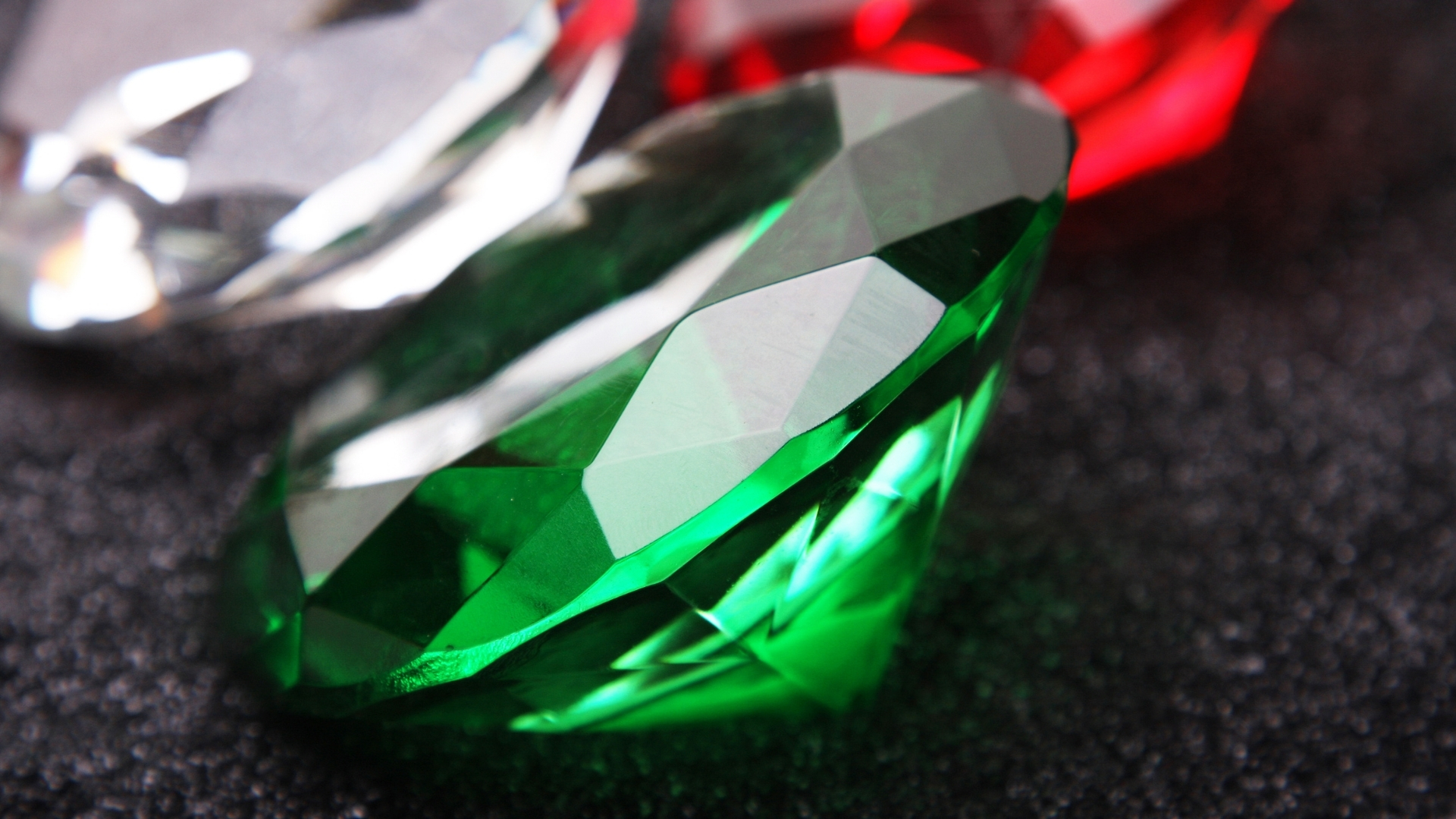
The 5 Cardinal Gemstones are birthstones, and seven other semi-precious stones complete the year. In case you’ve never heard of a black gemstone or a pink gem stone, there are birthstones with those beautiful colors. The list can be broken down as follows:
- January: the deep red garnet gemstone
- February: the purple amethyst cardinal gemstone
- March: the pale blue aquamarine gemstone
- April: the translucent diamond cardinal gemstone
- May: the vivid green emerald cardinal gemstone
- June: the creamy pearl gemstone
- July: the vivid red ruby cardinal gemstone
- August: the green peridot gemstone
- September: the deep blue sapphire cardinal gemstone (sometimes available as pink, green, purple, or yellow gem stones)
- October: the iridescent opal gemstone (although it is not time for opal gemstone facts, I strongly encourage you to dive deeper in the history and background of this amazing gemstone)
- November: the bright blue topaz gemstone
- December: the bright purple blue tanzanite gemstone, with some including the black gem stone onyx in the December birthstone list
Although there are no scientific grounds for what a birthstone is supposed to do, it is always quite pleasurable to ‘belong’. Even with such a small thing as a birthstone. There’s usually just one gemstone for each month, however with some sources, you can find that some months have up to four different birthstones. For instance, June has pearl, beryl, onyx, and agate.
9. Cardinal Gemstones on Engagement Rings: How to choose them
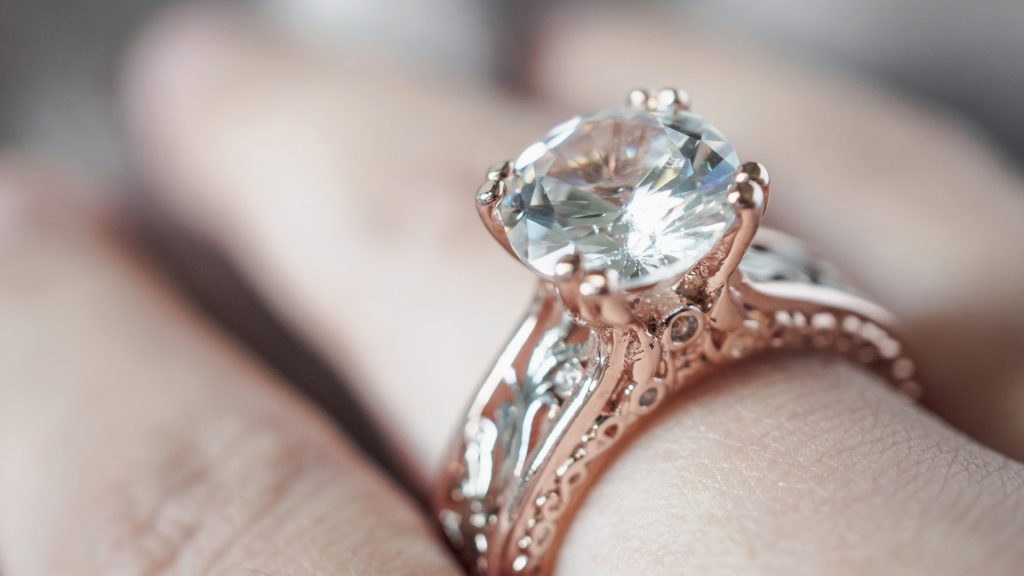
Choosing an engagement ring mounted with one of the precious 5 Cardinal Gemstones is the apex of elegance. At least, the apex of luxury. However, selecting the best one for your other half can be very tricky.
An engagement ring can feature an endless variety of settings (the precious metal on which the jeweler mounts the stone), cardinal gems, shapes, and cuts. As we’ve seen, one of the most interesting gemstone facts is that diamonds blew up as the choice engagement ring gemstone thanks to the company De Beers in 1948 and their marketing campaign ‘A diamond is forever.
Elements to take into account when you buy a gemstone engagement ring
Any kind of life stones gems & minerals can be used on an engagement ring. You can either choose to get a ‘ready-to-wear’ cardinal gemstone engagement ring, or mount your own family gemstone on the setting of your choice. When making your final choice, it is important to ask yourself a few questions:
- Is the receiving person a traditional, creative, or out-there person?
- What kind of budget for a gemstone engagement ring do you have?
- What type of precious material would you like?
- Are you ready to compromise on the quality to get a cardinal gemstone on your ring?
We have seen that cardinal gemstones like diamonds are available at any price point, since their value increases or decreases with the color, carat, and clarity grading. The cut is obviously an element to take into consideration, since flat cuts like the emerald cut will make the gemstone look more imposing.
► Read: 10 Ethical and Sustainable Fashion Brands
As per the setting, they are also available in all kinds of materials and shapes: white gold, platinum, rose or yellow gold… You can find twig designs, intertwined settings, and quite any artistic or traditional come up. Taking some time to think of your beloved’s favorite outfits, overall style and personality will enlighten you from the get-go. With that precious information in mind, you can make engagement ring shopping an enjoyable moment, free of (almost any) stress.
10. How to document yourself further about Cardinal Gemstones
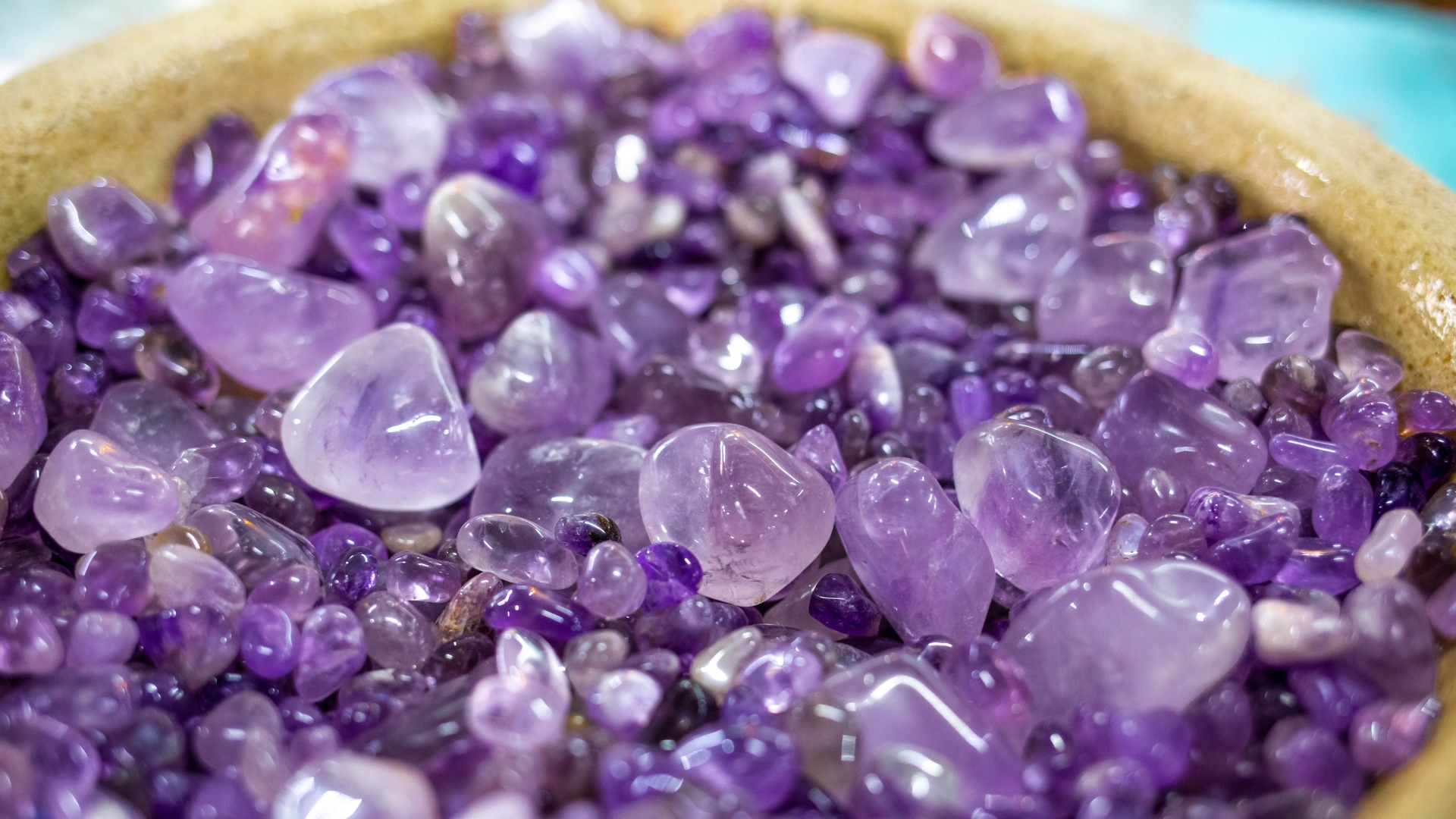
If you’re interested in snatching more exciting gem stone facts, like information about old cardinal gem mine processes or opal gemstone facts, you can do so online. Although I have written this guide as complete as possible, there are gemological associations that we can rely on. They bring about tons of bits and bobs about anything you’d need to recognize orange gem stones, or what a white gem stone might be.
Gemological Institute of America
The first one is the GIA, an all-important association in the gemstone world founded in 1931. The Gemological Institute of America provides countless and always updated reports and grading information. Rather than simple diamond, emerald, or alexandrite gemstone facts, these are professionals and the first laboratory in America to grade gemstones in a consistent manner.
Accredited Gemologists Association
The AGA, for Accredited Gemologists Association, is another independent, non-profit association established in 1974. For this association, it is of the utmost importance to keep educating people about jewelry, treatments, and the overall gemstone market. From the identification and evaluation of gem materials to the development of professional standards of analysis, practice, and ethics, you can learn as much as you can take from the AGA.
Those are two great sources for anything, from alexandrite gemstone facts to specificities in gemstone grading and anything related to gem stone facts. Plus, they are both accredited and their reports are certified which makes them as trustworthy as it gets.
10 Fascinating Facts about Cardinal Gemstones
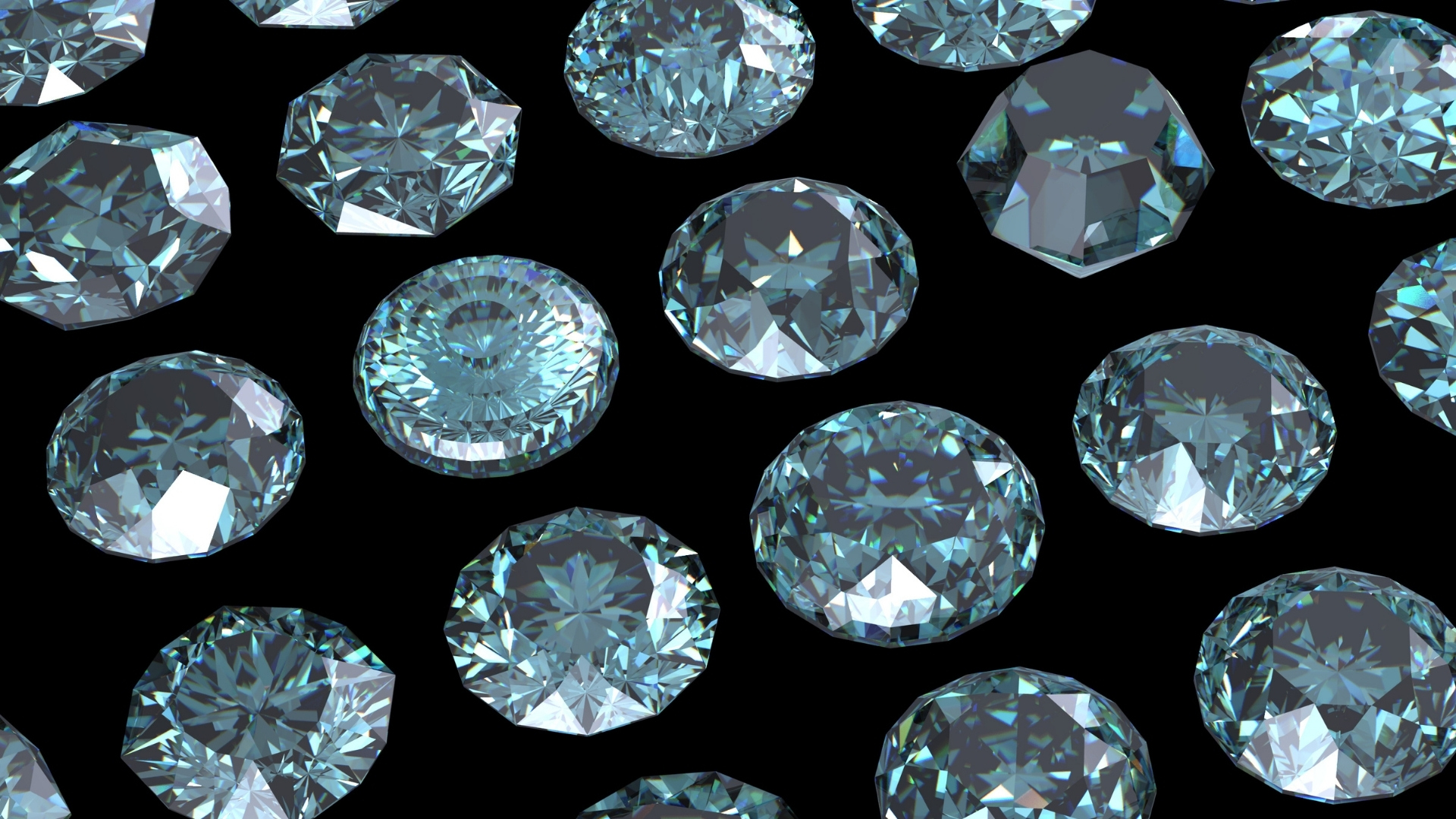
There you have it, a complete introductory guide about the 5 Cardinal Gemstones. It is so fascinating to dive into the world of cardinal gems. It’s not all about the money and the price tag – it’s about the rarity and purity of certain types of gem stones.
Diamonds, emeralds, rubies, amethysts, and sapphires are all as beautiful as a stone could be. I hope you’ve learned some interesting gem stone facts here – I might not have written about amber gemstone facts or about the opalite stone spiritual meaning, but I’ve covered pretty much all I could about the five most coveted stones in the world.
If you’ve enjoyed this article about gem stone facts, let us know in the comments! And to further feed your love of gemstones and jewelry, why not check out our favorite luxury jewelry brands? You’re sure to find a few gems there (no pun intended)!
PIN IT: 10 Fascinating Facts About the 5 Cardinal Gemstones
Related Posts
Sydney Duncan Designer Scarfs
Milan-based American designer Sydney Duncan’s vibrant hand-drawn prints blend her real-life…
July 29, 202410 Best Christmas Jewelry Brands To Offer This Holiday Season
Choosing Christmas jewelry can be a bit of a challenge. There are so many brands…
October 15, 2021© 2023 the Fashion Fabrique - website by MIRA Digital - All Rights Reserved

